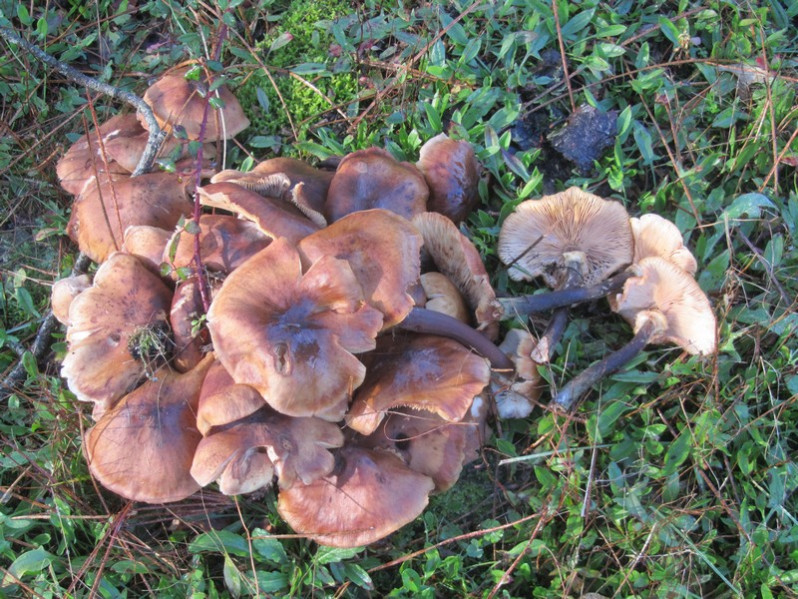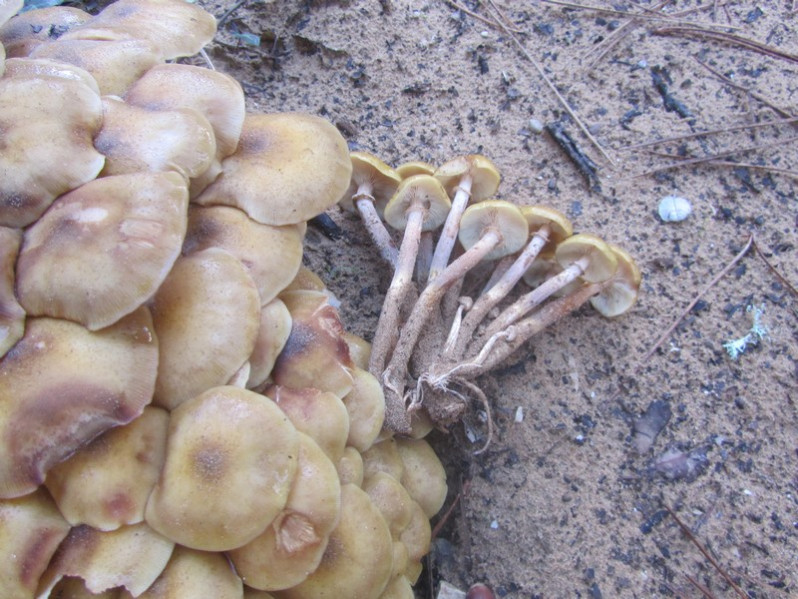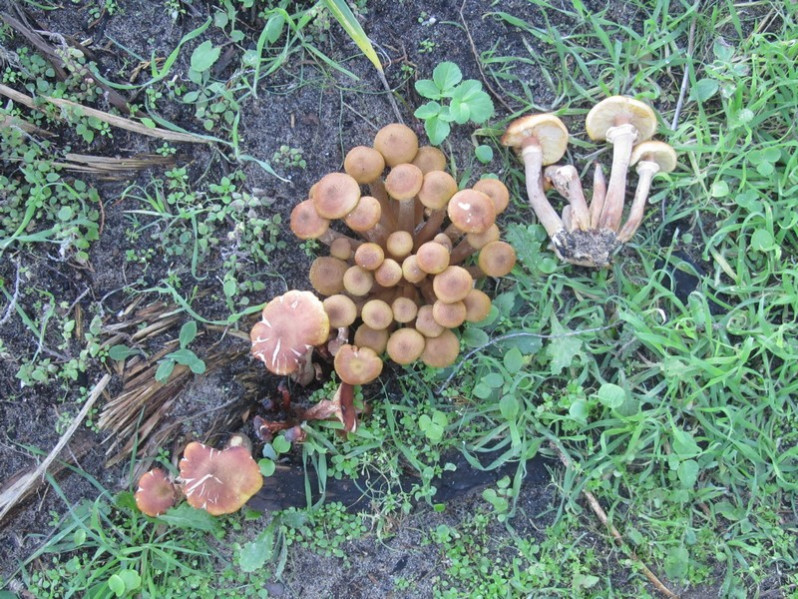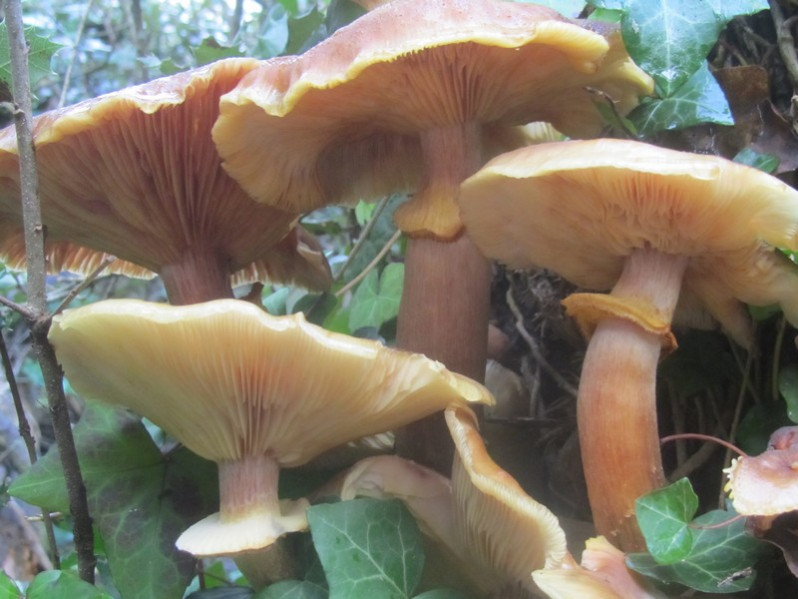
Armillaria mellea (Vahl) Kumm., 1871 ou l’Armillaire couleur de miel appartient à la famille des Tricholomataceae.

Le chapeau mesure jusqu’à 15 cm. Il est brun olive à jaune, à fines squamules brunâtres, labiles.
Ses lames sont subdécurrentes, blanchâtres, vite tachées de brunâtre.
Le stipe est cylindracé, ocre jaunâtre assez pâle, glabre ou à peine floconneux.
Son anneau est membraneux.
Les rhizomorphes [1] sont noirs, brillants, anastomosés, courant entre bois et écorce.
Il est cespiteux.

C’est un parasite virulent. Puis il devient saprophyte sur les feuilles.

